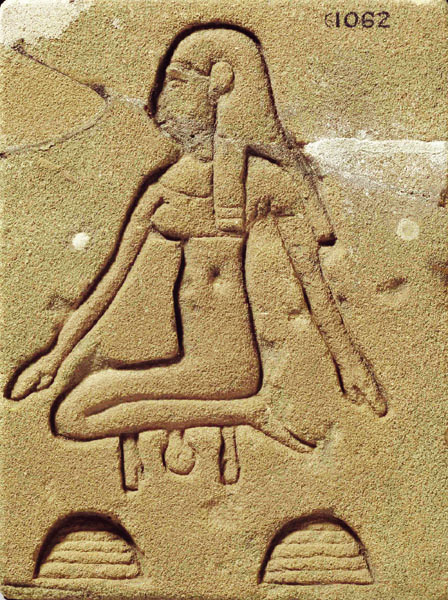Ancient Life: “Come Down, Placenta!”
Childbirth in ancient Egypt

Some ancient Egyptian mothers delivered their babies while squatting or kneeling on a pair of bricks, which provided room for attendants to catch the baby. In a very rare depiction, a set of birth bricks is incised on the bottom of a 7-inch-high sculpture (above) from the early Ptolemaic period (332–305 B.C.).
Just two years ago, archaeologists with the University of Pennsylvania working at Abydos, in southern Egypt, excavated an actual birth brick—the first ever uncovered. The 14- by 7-inch brick (below, with drawing) is decorated with colorful paintings depicting the joyful moments following a delivery: The new mother, assisted by two women and protected by images of the cow-headed goddess Hathor, proudly displays her newborn son. Archaeologists believe that the brick, found in a 3,700-year-old palatial residence, probably belonged to the wife of a mayor of Abydos, a princess named Renseneb.
Already a library member? Log in here.
Institution user? Log in with your IP address.

